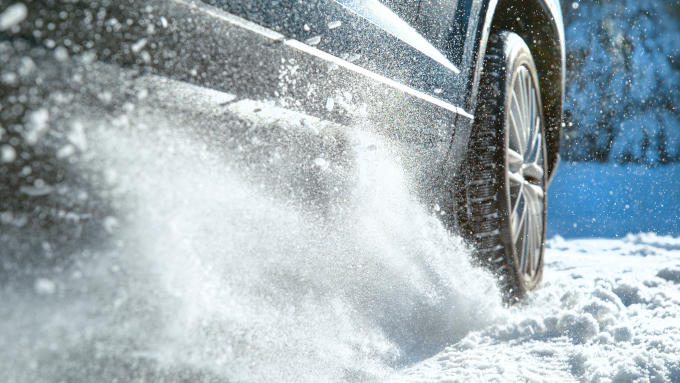Your vehicle was designed to last, driving thousands of miles without a repair. But, what happens when it's time to replace key components that wear out? You'll need to get a good mechanic or learn how to fix the problem yourself.
The good news is, some repairs are easy to do at home. Like replacing shocks and struts. It's not a job that you should attempt if you're not familiar working with vehicles, but with a little training and experience, you'll be ready to tackle the job. In most cases, it shouldn't take more than a couple of hours to get back on the road again.
If you're interested in replacing shocks and struts on your vehicle, you've come to the right place. In this article, we're discussing the difference between the two and how to replace them so you can save some money. Keep reading to learn more.
What are Shocks?
Shocks, also known as shock absorbers, do just that. They absorb the shock of bumpy terrain when you're driving. They literally keep the car from bouncing, providing a smooth ride for you and your passengers.
Shocks also provide better handling of your vehicle so that it will maintain proper direction around curves and on the highway at higher speeds. These are different than struts but should be replaced at the same time if your vehicle has both.
What are Struts
Struts, on the other hand, are part of the structural makeup of your vehicle. They complete the suspension system so that your vehicle rides smoothly and efficiently. Not to mention that they dampen spring oscillation to prevent damages to your suspension.
Some vehicles have shocks and struts mounted on the front and/or back of the vehicle. Other vehicles only have one or the other. It's important to understand the difference so that you'll know what you'll be working with once you get under the hood.
Why Should You Replace Your Shocks and Struts?
Shocks and struts are some of the most important parts of your vehicle. And, these components wear out over time and can cause not only for an uncomfortable ride but also other problems with your vehicle, like worn tires.
If you're noticing that your vehicle takes longer than usual to stop, or you're experiencing an unusually bumpy ride, it's probably time for replacing shocks and struts. Not replacing them can compromise your ability to control your vehicle, so it's important to check them from time to time.
When Should You Replace Your Shocks and Struts?
Whether you have shocks or struts, or both, you should consider replacing them at least every 50,000 miles. You can check the integrity of shocks and struts by simply bouncing your vehicle and monitoring the give. If it doesn't bounce back, you probably need to consider replacing shocks and struts soon.
Other signs that you need to perform some maintenance on your vehicle with relation to the shocks and struts include diving during heavy breaking or wandering on the highway. Leaking shock fluid is another indication that it's time to get your hands dirty.
How to Replace Shocks and Struts
Replacing shocks and struts can be dangerous if you don't know what you're doing. Read through these instructions carefully before attempting to dismantle your vehicle to ensure safety and efficiency throughout the project.
Spring Compressor
The shocks and struts on many vehicles are integrated with springs that can pop off and injure you or damage your vehicle if not removed properly. In such cases, you'll need a spring compressor in order to take everything apart safely.
You can rent a spring compressor from your local auto parts store but it's important to understand how to use it. This is the most integral function for replacing shocks and struts and you need to be careful. If you have any doubts about removing the springs, you should consider taking your vehicle to a mechanic instead.
Raise the Vehicle
Once you have all of your parts and tools ready, you should raise your vehicle one side at a time using a car jack. After it's up, place a jackstand behind the front wheel to ensure stability. Otherwise, you can use a lift.
Just make sure the vehicle is secure before attempting to loosen anything or getting under the vehicle.
Remove Old Shocks and Struts
First, you'll need to remove the wheels. Next, using your spring compressor, you'll look for three bolts at the bottom of the shock or strut that holds it in place. Loosen these bolts but don't remove them completely just yet.
On the top of shock or strut is another bolt inside the engine compartment. You can use an impact wrench with a socket extension to loosen it. Get this loose and finish removing the other bolts and your shock or strut should come free.
Installing New Shocks and Struts
Once the old shocks and struts have been removed, you can simply replace the new ones. Make sure that you tighten all of the bolts securely. You will probably need a torque wrench to do this.
Put the wheels back on the vehicle and you're ready to test it out.
Test Drive
As soon as you have the vehicle put back together completely, you should take it for a test drive to ensure everything is functioning properly. Don't go too fast. A simple slow drive through the neighborhood should give you a feel for how the vehicle handles and stops.
You can wiggle the steering wheel as you drive to test the response of the vehicle. If it's a smooth ride and turning isn't a problem, you're good to go.
Alignment
After replacing shocks and struts, it's also important to get a professional alignment on your vehicle. This should be done within a few days of your completed project in order to maintain your vehicle's safety. Don't wait to have this done or you could end up with other unnecessary repairs later down the line.
Replacing Shocks and Struts
Replacing shocks and struts on your vehicle doesn't have to be a scary process. Just keep these tips in mind when you start to notice your vehicle running a little rough on the road. And, remember, this is not a job for a newbie DIYer.
You should have at least some experience working under the hood of a vehicle before attempting this task. It can be somewhat dangerous if you don't know what to watch out for. But, if you're up for it, it will save you hundreds of dollars compared to taking your vehicle to the mechanic.
If you need help replacing shocks and struts, or if you have questions, feel free to contact us here at AAMCO Overland, Park. We're dedicated to total car care.










